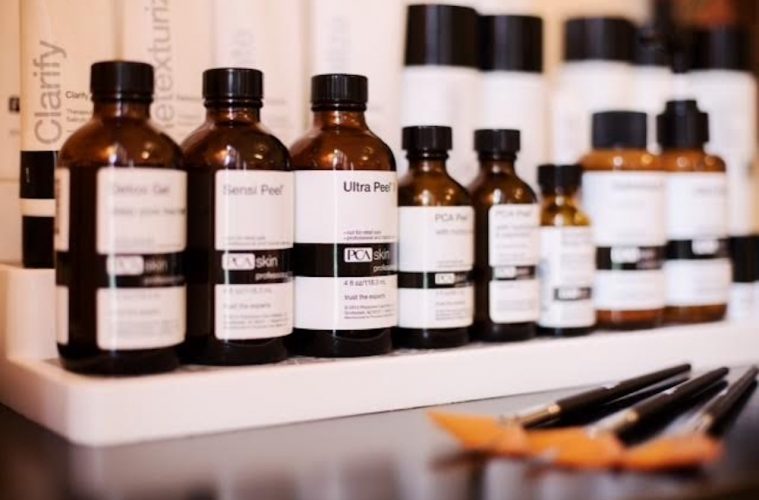If you’re not interested in the fountain of youth, I’m willing to bet you’re not being completely truthful. You’re reading this, right? I have no (or at least minimal) qualms about trying out skincare techniques, especially if they’re going to bring me one step closer to looking like Reese Witherspoon (is that lady aging in reverse or what?) So, it was with “Operation Reese” in mind and only a tad of trepidation that I recently had my first chemical peel, administered under the expert tutelage of Karen Damon, licensed esthetician and owner of Ciao Bella Skincare in Newburyport.
I had previously considered a peel but had questions. Was it intense? Was my face going to fall off and leave me looking like an extra from Halloween? The answer to both questions was technically yes, but on a far, far less dramatic scale than I had envisioned
When considering if, and where, to get a peel, Damon suggests people “do their homework and make sure they will be receiving a true chemical peel.” An authentic peel or series of peels yields noticeable results because there’s true science behind them. A peel causes your skin to stimulate collagen, and your face peels because your skin is resurfacing from the cellular level. Damon utilizes PCASkin products, which use exfoliating acids and tyrosinase inhibitors, the skin enzyme that causes melanin, to help deliver noticeable results that improve with each session.
Yes, your face will peel, on average about three days after treatment. But remember, this is what you’re paying for! (Peels at Ciao Bella Skincare range from $125 for a facial chemical peel to $175 for a medical grade peel). In my experience, there was one day when my skin felt a little tight but it quickly passed and my face of baby soft skin was soon revealed. That’s right, baby soft skin. On my face. On my face! I’m a mother to an actual baby and we compared skin and he still won but it was a narrow victory. I had success because I adhered to the most important rule of after-peel care which is do not irritate (read: pick at) your face. This could cause hyperpigmentation which is likely one of the reasons you have undergone the peel in the first place. After a peel, moisturizing is the name of the game. Above all, a daily moisturizer with broad spectrum SPF will be part of your routine. Post peel “figure that by lunchtime your SPF is not working anymore” and reapply, says Damon. She cautions clients not to forget the sunset hours when it can be tempting to think rays aren’t strong enough to cause damage.
Peel season is currently on and “ends July 1” says Damon. It is wise to avoid scheduling peels in the height of summer because they cause your skin to (temporarily) become more photosensitive. Ideally, you’ll want to avoid prolonged exposure to the sun for about 14 days following the service. Timing is customized to individual needs, I expect to schedule two or three peels in a calendar year. People in their early twenties are not too young to begin a regimen, for younger clients Damon often administers the sensitive version for skin that doesn’t require as much intensity.
Damon puts any nerves at ease with her promise that “in terms of comfort level, you will leave feeling the same as when you walked in.” That is to say your face won’t feel like fire and you won’t resemble a cooked lobster. You’ll leave looking and feeling like the most glowing version of yourself. Promise.
Ready. Set. Glow! (Skincare Tips)
Select a quality product line. Damon favors products with ascorbic acid (Vitamin C) which strengthen skin and combat fine lines and wrinkles.
Use a quality eye cream or eye gel, whether you select a gel or a cream is a matter of personal preference.
Be gentle when cleansing, especially when it comes to delicate skin around the eyes.
Wear sunscreen. No exceptions!

